Dec 20 2016
The mysteries of the force curve
For OTW rowing, I am not even convinced a force curve should be looked at independently from boat speed and acceleration. On the other hand, wouldn’t it be great if we could extract a few meaningful parameters from the force curve to help analyze technique?
The approach Nielsen-Kellerman have taken is using “Slip” and “Wash” parameters, which basically tell give you a reduction in effective stroke length. Slip is basically the stroke length (or oar angle difference) it takes to get to 100N of force from the catch, and Wash is the oar angle difference (or stroke length) near the finish at which the force drops below 100N. The figure shows this well (from the brand new “stroke profile” plot on rowsandall.com).

It turns out that the schematic stroke profile is pretty close to the real one. When I calculate the area under the curve and compare with the average stroke force, there is pretty good consistency.
The ratio of average/peak force is a value between 0.5 and 1, the latter value just being a theoretical upper bound for a perfect block shaped force profile and the former the value for a triangular force profile. My values are pretty consistently around 0.57, but Greg Smith’s values are significantly higher (above 0.65 if I remember well).
So in the name of science, I did the following experiment on the erg. I must say using Painsled for iOS made it very easy to capture stroke profiles. I rowed a just row 150m off, 10 strokes “on”, varying stroke rate between 20 and 36spm. During the “on” strokes I tried to row what I consider good technique. Immediately after the 10th stroke, I grabbed the phone, did a screen capture, and took a picture of the PM5. I went up to 36spm, and back down, to see if there was consistency.
Before I show you all the raw data, here are the aggregate plots made on Rowsandall.com:
As you can see, my Average/Peak force ratio correlated positively with stroke rate, being 0.56 below 24spm, and 0.60 above 32spm. Drive length was pretty constant. I didn’t see a difference between going up the ladder or going down. Work per stroke correlated positively with the stroke rate, as did both average and peak force.
So here are the raw data, one set of stroke rates per picture gallery:
20 spm
24spm
28spm
32spm
36spm
The graphs from Painsled show the last stroke of the set of ten in bold, and a few of the strokes before in a lighter line. The pictures of the PM5 show the final stroke. I was struck by how different the pictures look from the graphs, but I guess that’s an effect of the vertical scaling.
I will have to think about this a bit more. Here is a link to the article by Kleshnev who has numbers between 0.5 and 0.6, with 85% of the rowers at the higher end.
I guess the next step will be to film my stroke.
At the least, I think this post is a good demonstration of the power of a good data analytics site, combined with the excellent erg data capture of Painsled.
Post Scriptum
Discussing the stroke profiles, Greg and I made the cumulative plots of the Average/Peak force ratio on rowsandall.com. Here are the two plots. Interesting to see the differences.
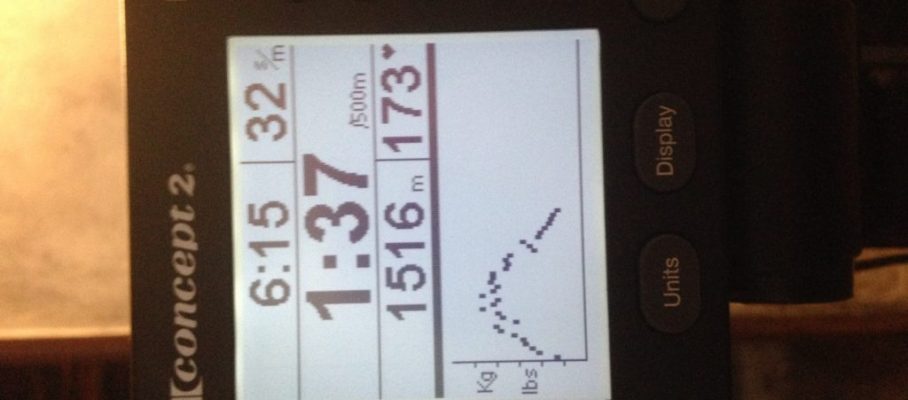
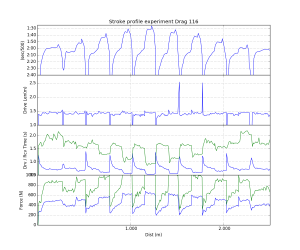
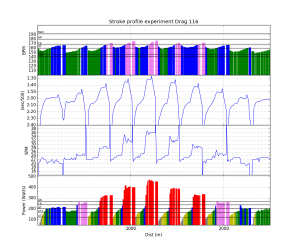
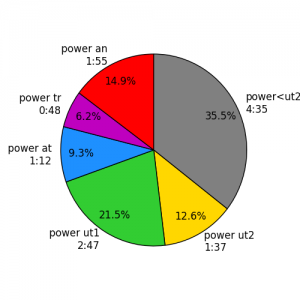
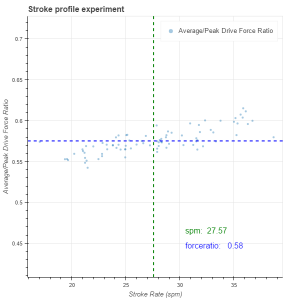
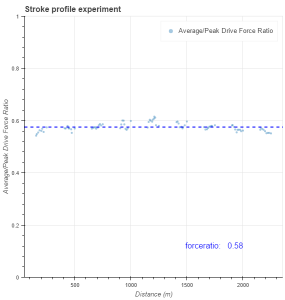
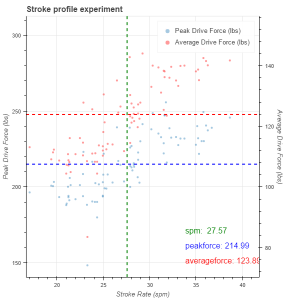
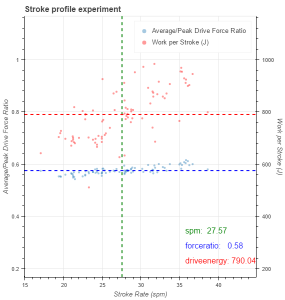
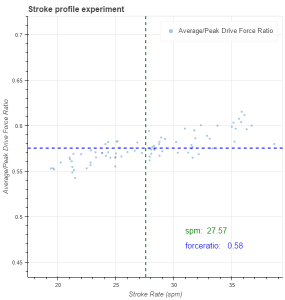
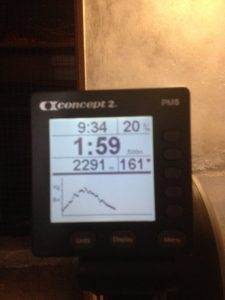
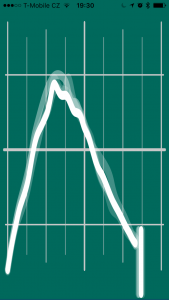
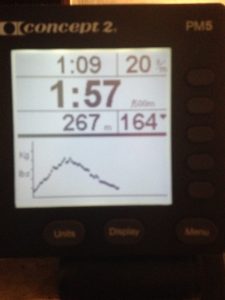
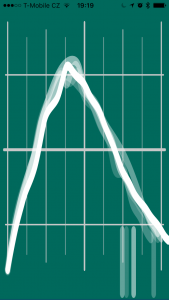
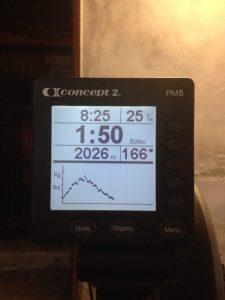
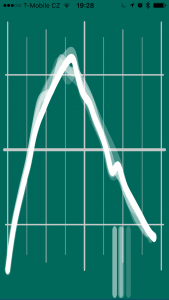
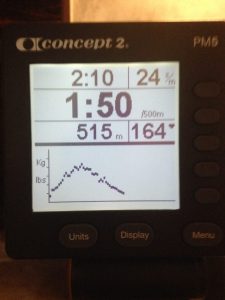
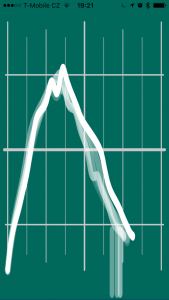
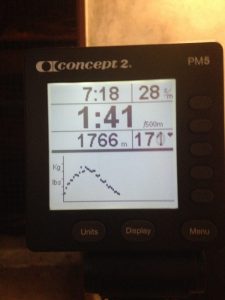
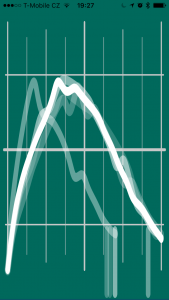
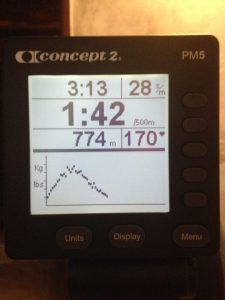
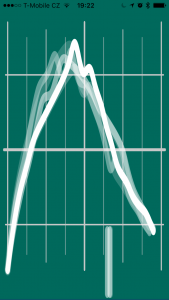
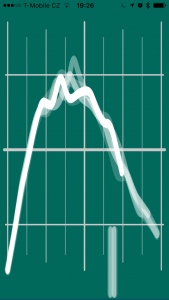
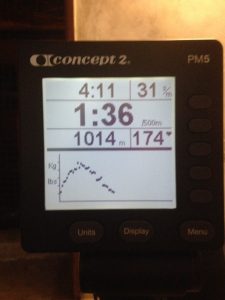
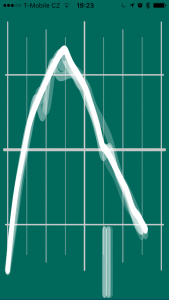
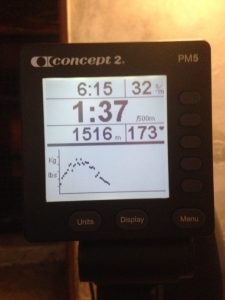
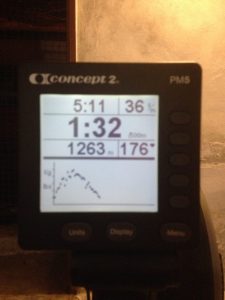
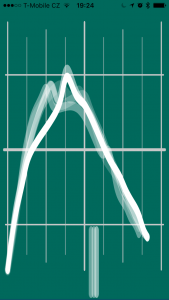
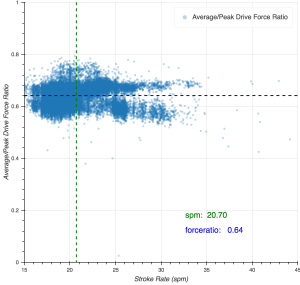
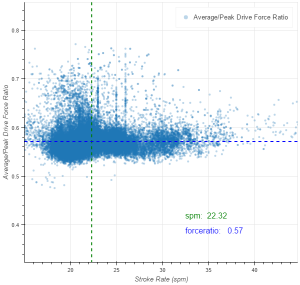
May 13 2017
Saturday – Experimenting with footstretcher setting
There was no time for a long outing today. There wasn’t even the possibility, because the Youth regatta was in full swing and the lake was closed for other rowers.
I wanted to test some foot stretcher settings, so I figured that it was OK to use a remote corner of the lake that is outside the main traffic patterns.
There has been some discussion on rec.sport.rowing on how to set the footstretcher, and about speed gains to be achieved by setting the foot stretcher towards the stern (larger catch angle, more efficient stroke, etc). I decided to do an experiment.
Row 2x250m (one in each direction, with 250m “rest” to turn) with each foot stretcher setting. Try to hold 300W as closely as possible. Measure total time over 500m. Running start. Stroke rate free.
Today there was almost no wind and the water was flat.
The 300W is submaximal, which makes it easy to hold steady and focus on technique. So after a few minutes of warming up, I set off for the first set of 2x250m. Then I changed the footstretcher as much as possible towards the bow (where I was limited by my backstops which I didn’t want to change OTW), and repeated the experiment.
I did have the feeling that there was slightly more “light wind” than in the first run, though. This may have destroyed the experiment.
The second set with the bow-wards setting felt weird, and I had a lot of room between my belly and my scull handles at the tap-down. Here are the overview graphs: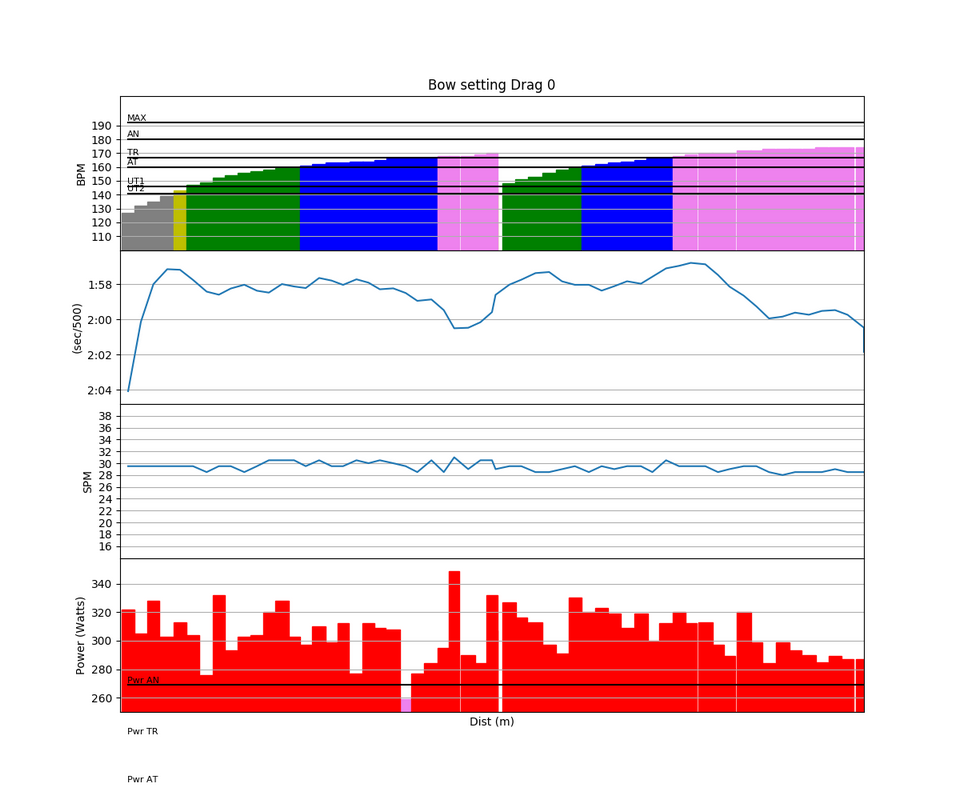
Here are the Empower force curves:
So only a 5 degree shift in catch and finish angles for what feels very different in the boat. The stroke felt much lighter with the bow-ward setting. Now on to the verdict.
My “normal” setting (larger catch angle):
Workout Summary - media/20170513-144854-Sanders SpeedCoach 20170513 0929amo.csv
--|Total|-Total-|--Avg--|-Avg-|Avg-|-Avg-|-Max-|-Avg
--|Dist-|-Time--|-Pace--|-Pwr-|SPM-|-HR--|-HR--|-DPS
--|00500|01:58.8|01:58.7|302.9|29.4|159.1|171.0|08.6
W-|00500|01:58.8|01:58.8|302.9|29.3|159.1|171.0|08.6
R-|00000|00:00.0|00:00.0|000.0|00.0|000.0|171.0|00.0
Workout Details
#-|SDist|-Split-|-SPace-|-Pwr-|SPM-|AvgHR|MaxHR|DPS-
00|00250|01:00.8|02:01.6|306.9|29.6|154.5|167.0|08.3
01|00250|00:58.0|01:56.0|298.7|29.1|163.9|171.0|08.9
And the “bow-ward” setting (shorter catch angle):
Workout Summary - media/20170513-144939-Sanders SpeedCoach 20170513 0938amo.csv
--|Total|-Total-|--Avg--|-Avg-|Avg-|-Avg-|-Max-|-Avg
--|Dist-|-Time--|-Pace--|-Pwr-|SPM-|-HR--|-HR--|-DPS
--|00500|01:59.0|01:58.9|304.4|29.4|161.5|174.0|08.6
W-|00500|01:59.0|01:59.0|304.4|29.4|161.5|174.0|08.6
R-|00000|00:00.0|00:00.0|000.0|00.0|000.0|174.0|00.0
Workout Details
#-|SDist|-Split-|-SPace-|-Pwr-|SPM-|AvgHR|MaxHR|DPS-
00|00250|00:59.8|01:59.6|304.3|29.7|157.3|170.0|08.4
01|00250|00:59.2|01:58.4|304.5|29.0|165.7|174.0|08.7
For completeness, the SpeedCoach itself reports 1:58.8 time at 29.0 spm and 301W for the “normal” setting, and 1:59.0 at 29.0spm and 306W with the bow-ward setting.
So almost the same total time with a power difference of 1% (5W at most). This is in the order of magnitude that I was expecting, and the question is whether the measurement system is accurate enough to measure such small differences.
But it was fun to do, and I am going to stick with my “normal” setting with the larger catch angles.
By sanderroosendaal • Uncategorized • 1 • Tags: experiment, OTW, rigging, rowing, single